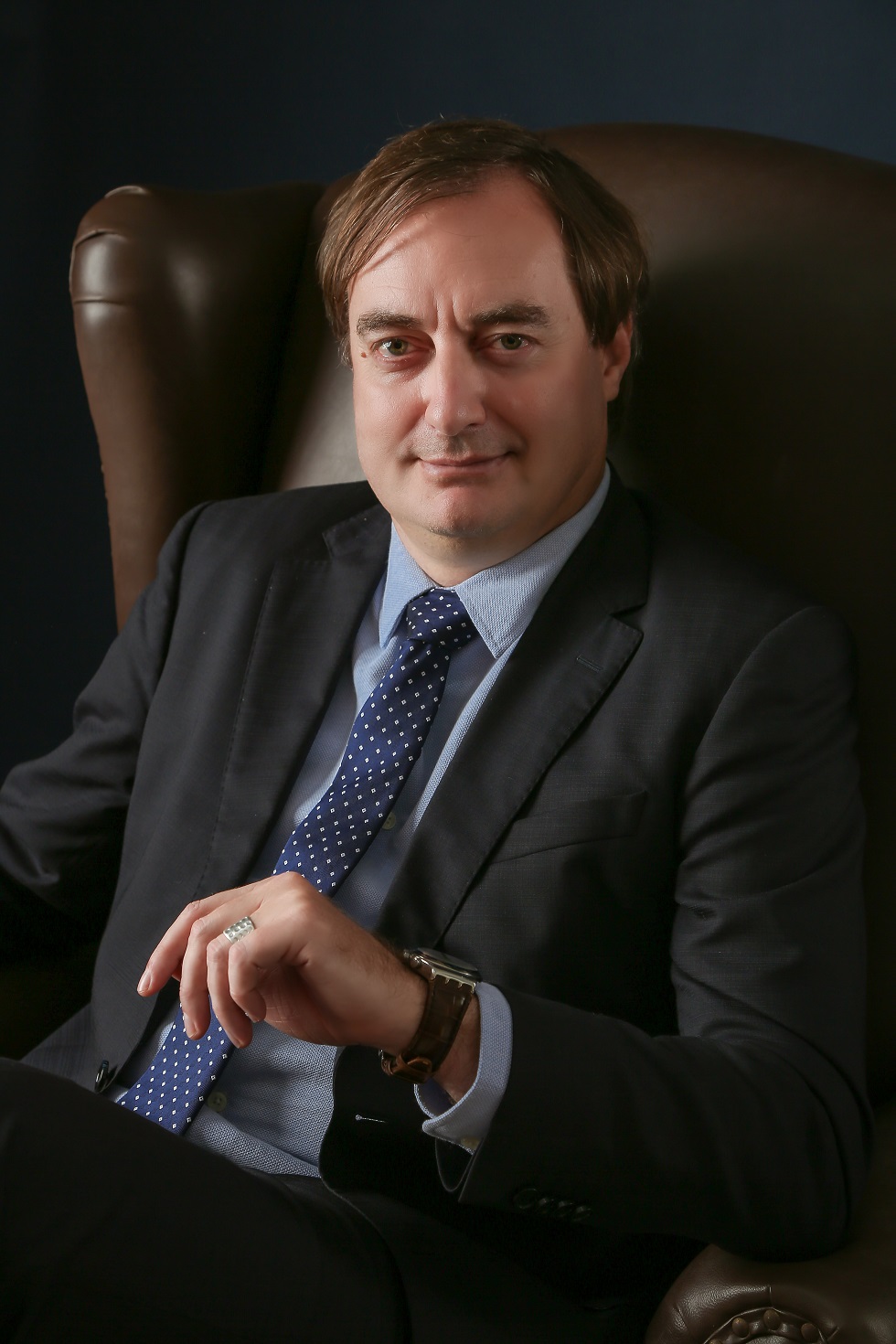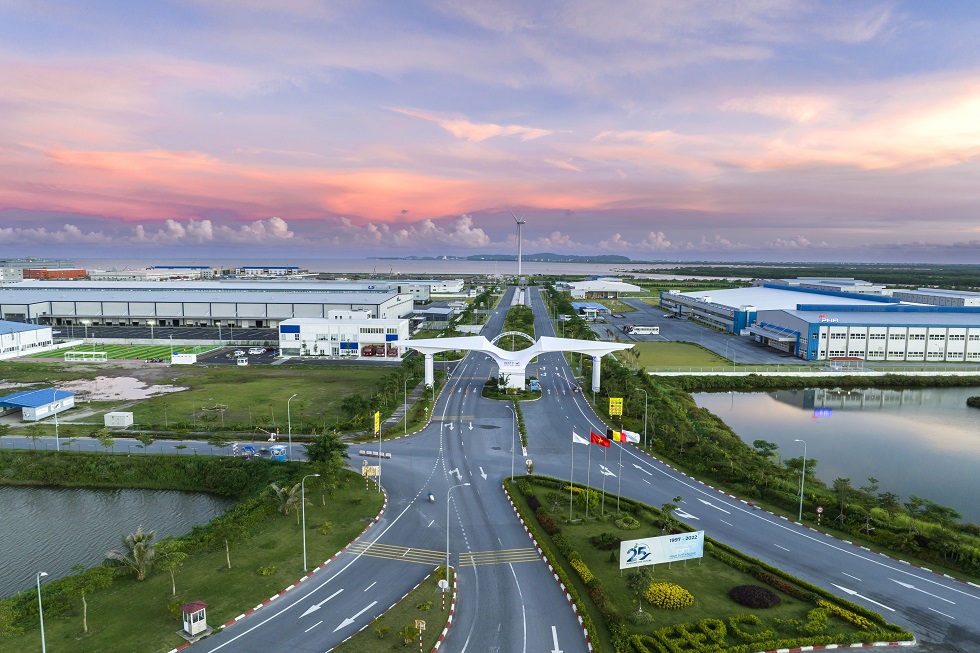Since its early years of operation, DEEP C has positioned itself as a leading developer and operator of an industrial zone and port complex in Haiphong City. During 25 years of development, the Belgian company has proven its long-term dedication to sustainable growth. In an interview with The Saigon Times, Bruno Jaspaert, CEO of DEEP C Industrial Zones, talked about the company’s business vision in Vietnam. Excerpts:

The Saigon Times: What made DEEP C decide to invest here and maintain this business development journey for more than two decades?
Bruno Jaspaert, CEO of DEEP C Industrial Zones: 25 years ago, the Belgian shareholders were actually planning to invest in Shanghai. At that very moment. Shanghai was not fully developed in the way that we know it today and the original management were aiming for a large and centrally located investment zone along the riverbank. In the end, that deal fell through but that very same day they were offered to have a look at an alternative investment opportunity in North Vietnam
When the company arrived, Haiphong was just a quaint river town with some port facilities but not even remotely the gateway for the north of Vietnam as we know it today. To be fair, our project in Haiphong has lagged behind other investments in Europe, Africa and Middle East as it took a lot more time for Vietnam to experience their own growth, especially in the north.
That quiet beginning gave the team in Vietnam the time to grow themselves into what I believe is today the strongest team in the field of industrial park development in Vietnam. It allowed us to ensure that we could step by step get our positioning into the market. And that is where we are today: offering unique prime real estate locations for investors looking into both logistics and industrial projects using the gateway of Lach Huyen deep sea port and the proximity of the Chinese border to open up the North Vietnamese market. Today we have attracted more than 135 investment projects representing more than 5 billion USD investment capital. The net sellable area that is held under management by DEEP C represents roughly 20% of the total available industrial land in the North.
Looking back, what were the challenges the company overcame to achieve what it is today?
There were plenty of challenges. We had to adapt our European way of thinking to the Vietnamese reality. We had to accept that Vietnam was, at the moment of our arrival, only at the early stages of its economic open-door policy. We had to grow together with Haiphong towards a new economic development model, using industrial zones like ours to kickstart the economy of the North.
We had to get used to the overwhelming amount of paperwork to obtain approval for industrial zone construction and to ensure our compliance with the Vietnamese legal framework. I strongly believe that it is the challenges we overcame that form the foundation for the future success of your company.
How do you see the potential and upcoming trends of industrial zones in Vietnam?
By now it is no secret that an enormous shift of production capacity is pivoting towards Vietnam. Personally I tend to compare it to a tsunami. We see it is coming, but we do not know exactly where or when. However, the crest of the incoming investment waves will take a little bit longer to hit the beach and will be too big for Vietnam to absorb.
It is important for Vietnam to use this momentum to select the kind of investor they want. Vietnam should be picky and go for quality investors. They should find those investors that are eager to go in and willing to invest in a better future. Investors should be judged on clean production methods, asked for better environmental standards and sustainability policy.
The biggest question today is not finding investors, but rather finding the right investors.
Investment in industrial zones today is not just about factories but also sustainable values. How is this trend happening in Vietnam?
To understand what is happening in today’s Vietnamese market, I believe it is fruitful to look at one of the most similar markets you can compare Vietnam with, although as a country they’re quite different, China. If you see what has happened to China over the past 25 years, it can help you predict what will happen to Vietnam in the next 10 to 15 years.
When a country is opening its doors for investors, the first thing you need is locations with great accessibility and infrastructure, and a well-trained and English-speaking workforce to accommodate the new investors. As a result, the original wave of investments in Vietnam was especially aiming for the area around HCMC and Hanoi.
This is a strange phenomenon as in the rest of the world, the economic growth starts from coastal areas., then builds up the logistics to fuel development inwards and towards the metropoles of that country. It is the logistics behind that seaport infrastructure that allows an ever-faster growth pattern. No doubt we will see a huge increase of the speed of the coastal industrial development over the next years to come.
I believe Vietnam has reached the stage where they can boast some modern and world-class port infrastructure, and its work force is ready to roll out industrial development at a much higher speed for its future investors.
Today Vietnam still struggles with logistics, despite the fact it gets better and better at it. Vietnam has many navigable rivers cutting through the country horizontally, which offer the opportunity to develop a waterway-based logistics system. The waterways are today still underused but that can be solved with further upgrades and investment.
This ties in with the global push for more sustainable values in logistics by taking more trucks off the road, carbon free transportation measures, and dealing with packaging. More and more companies are underwriting the United Nations’ Sustainable Development Goals and have their own environmental, social, and governance (ESG) policies. So for Vietnam it offers the opportunity to diversify itself and reposition itself as a safe have for sustainable investments.
DEEP C is one of the first five industrial parks selected by the Ministry of Planning and Investment to pilot transformation into an eco-industrial park model towards a circular economy. As a pioneer, are you under pressure to meet the requirements for sustainable development?
Our pressure is originating from our own decision to become the most sustainable industrial zone. I keep repeating to our team that there is only one future. It is, as per our tagline, building the future. That future needs and will be sustainable. If we are not sustainable, we cannot be profitable in the long term and showcase to our customers that our locations are the best they can get inside Vietnam in terms of sustainability. Sustainability is not only about environmental care, or carbon credits for your company, but an approach to an economic growth model aiming for long-term profit and the well-being of our planet.
We might be a pioneer for Vietnam, but we should not forget that Vietnam is a pioneer in this economic growth model for the world. The standards that the new Decree 35 on eco-industrial parks is describing are a giant step not only for Vietnam but on a global scale.
So, the pressure is on us, because many people will come and visit us. They want to know how we make a difference, and why we keep using these sustainable practices as a key differentiator. The answer is in front of all of you if you visit DEEP C.
What are the criteria for sustainable development for this particular market in Vietnam?
Sustainability can be defined as a long-term goal to remain profitable. It is about balancing the importance of nature with the need for economic growth and the care of humans that live on this planet. Sustainable development criteria for the industrial park globally still in an infant stage. Vietnam counts only five pioneer projects, and they are all quite different in terms of size, activities and scope.
The decisions and measures taken today by these pioneer parks are actually tiny steps on the long and winding road of sustainability for Vietnam. However, they are very important steps because they are the first ones. Being DEEP C, we want to be the first to leave these steps behind and continue to explore what the future can bring us.
I get often asked how can I define sustainable development if our main activity is attracting (industrial) investors? We have an answer for that. We offer a location that will still be there in a well-maintained state in 50 years from now, where wastewater coming out of our wastewater treatment plant can be recycled in the production process of our customers, where rainwater is converted into high-end water applications, where a waste collection scheme is in place to look for possible ways of generating values out of waste. We create an environment in which we are open to investigate new ideas, to innovate and make a difference. To celebrate our 25th year of activity, we have set up DEEP C farm, which produces organic fruit, vegetables, rice, chicken and fish. This project makes me particularly proud as it underwrites the core value of sustainability: it is good for our people and our planet, and it might also contribute to our profitability.
25 years is long enough for businesses to make their mark and share the development mindset. What are the core values DEEP C has established for itself in the Vietnamese market? Do you have a long-term and sustainable investment plan in Vietnam? If so, what is it?
For our 25th year anniversary in Vietnam, it would have been a good idea to define our values around our name.
Our name is DEEP C, partially a play on words, on the fact that we are developing land from the sea. Our land is born out of the sea, but the C also stands for our core values.
It is a C for commitment, and the double C you can find in accountability. It is also the C for collaboration, and coordination, and it is the double C that you can find in customer centricity.
It is a C that represents compliance and a C that stands for creativity. And there is the much overlooked C that tells you that communication is key if you want to manage growth, and make all of this happen.
For core values to make a difference it requires management that lives by those values, and hard work to teach your people those values.
In the near future, DEEP C will expand beyond its current five locations. But the plan is to remain the same DEEP C with the same values, and those values will lead further growth.









